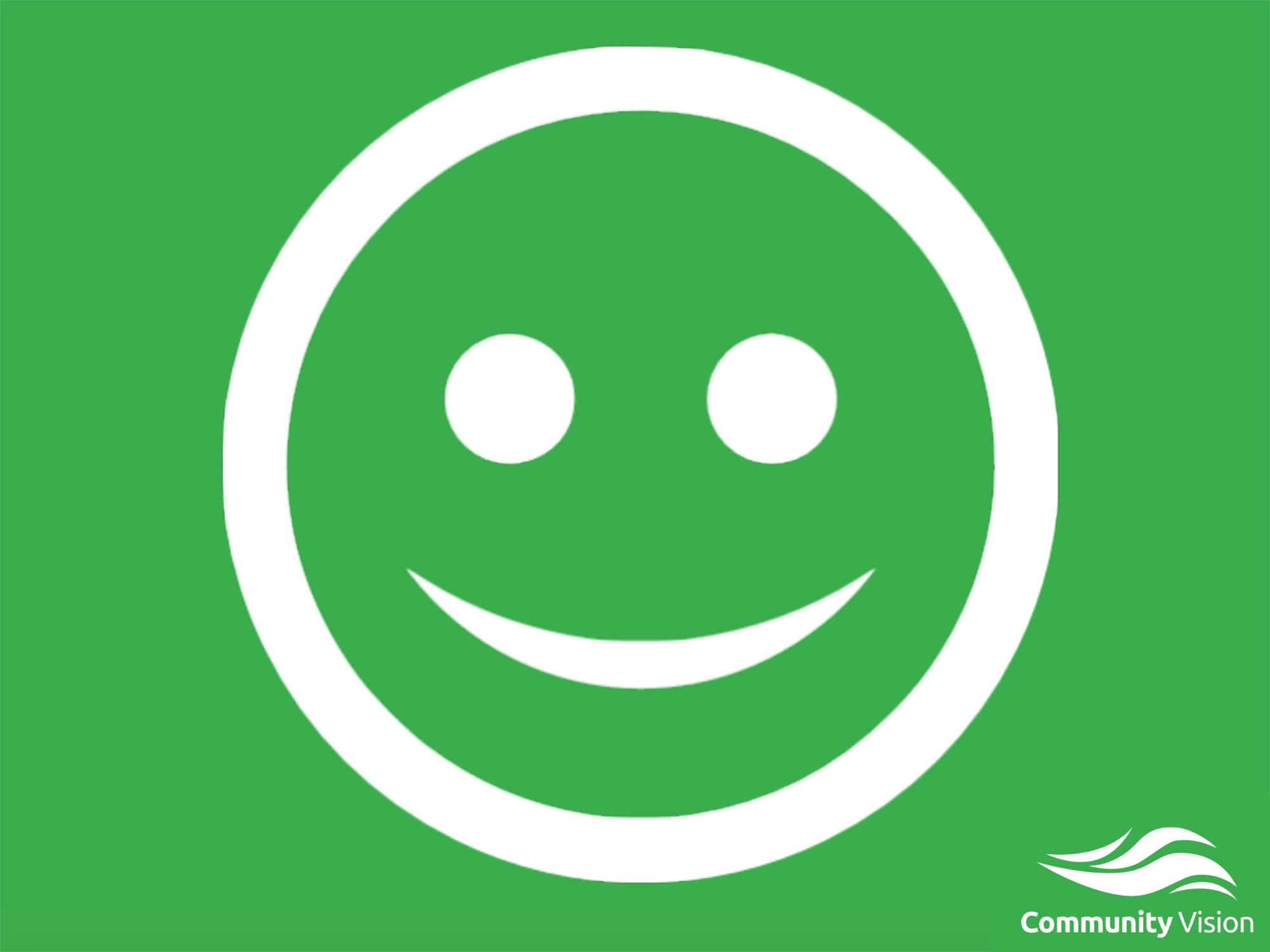The smiley face system looking out for people with a disability

Community Vision, a not-for-profit community-based organisation in Western Australia, has come up with a unique way to make sure their clients are okay during the outbreak of COVID-19.
Based on an initiative created in the United Kingdom, they have introduced ‘I’m OK cards.’ One side of the card is green with a happy face, while the other side is red with a sad face.
Community Vision customers have been sent a card in the mail and have been asked to display it in a window of their home that is visible from the street so that Community Vision workers can keep an eye out if someone needs help at home.
Chief Operating Officer (COO) at Community Vision, Yvonne Timson says, “The reason why the red and green card [has] a smiley face on it is to help those with maybe an intellectual disability or other complexities so that they [are] able to understand and ask for help.”
The use of the ‘I’m OK card’ is not just beneficial for letting Community Vision workers know when someone needs help in their home but also to help with the struggles of social isolation.
Ms Timson says, “The big reason for this is those with a disability are not immune from getting mental health conditions, and we know in this situation, where we are all self-isolating and all the rest of it, we’re having difficulties in keeping up social connections.
“We know that isolation has been linked to increased mental health conditions. We know that community contact is really important for our wellbeing and that’s why having this way of another communication channel, of another way we can let people know that we may need support or we’re okay.”
According to Ms Timson, the response to the roll-out of the cards has been phenomenal.
Dearne Arrah and her son Jack, who lives with a disability, are one of many families using the ‘I’m OK card’ in their home, and she says that it’s important that it’s a system that he is able to interact with without her input.
“[Jack] has reacted in a really positive way. From his perspective, he is excited that he gets that input, that he gets to put it up, and that he knows somebody is caring.
“[For me] it’s me remembering to check in with him as well. So that’s that check-in in the morning, ‘are you okay? ‘how do you feel?’ and he gets that opportunity to say how he feels.”
The cards are also helping her family remain part of the community, despite the restrictions currently in place to combat COVID-19.
Ms Arrah says, “It’s also for neighbours to see that we are okay. It gives them some sort of indication that we are okay and I think that that is a really nice gesture.”
“I think the thing that it has done is not make you feel so isolated, so it’s feeling that we are still within that community, still in a caring environment, respectful of all the requirements that are in place.”
Community Vision is also encouraging their customers and clients to utilise online resources such as virtual customer catch-ups and welfare checks as well as weekly communication updates and COVID-19 resource hubs.
For more information about COVID-19 and the disability sector visit our dedicated COVID-19 information page.
How are you letting people know you are okay in your neighbourhood? Let us know in the comments below
